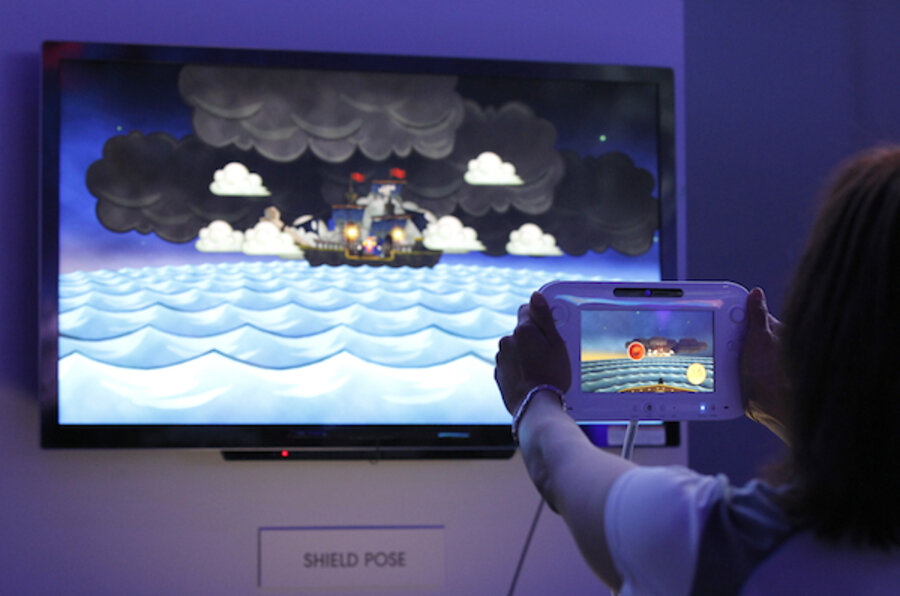Wii U: Five players, one touch screen, total family madness
Loading...
Back in June, Nintendo took the wraps off the Wii U, the successor to the aging Wii console. The device, expected to hit shelves towards the end of this year, included a motion-sensing controller, which Nintendo said could be operated independently – or in concert with – the television set. This week, at the CES show in Las Vegas, Nintendo again trotted out the Wii U, and offered a few journalists the chance to give it a brief test run.
So what does this new system offer over the original Wii? Well, as the Associated Press points out, the Wii U system will sync not only with the new touchscreen controller, but also older Wii-style controllers.
"For example, in one of Nintendo’s demonstration games, four players with Wii remotes chase a fifth, who uses the touch controller," writes the team at the AP. "The fifth player uses the screen on the controller to guide his movements, which are thus kept secret from the other players. The other players keep track of their own movements on the TV screen."
Which syncs up pretty well with what Nintendo had stressed last year – that the Wii is meant to be, at least in part, a family device, for use in group settings.
Over at Ars Technica, Ben Kuchera notes that Nintendo is still remaining mum on the spec list behind the Wii U (save what Kuchera describes as a "few hints.") But he does like the interface.
"The new controller is an impressive thing to hold in your hands. It feels solid and comfortable, and nothing about it marks it as a weak link," Kuchera writes. "The screen itself is bright and beautiful, much clearer than the screen on an iPad, and even small details of the games are able to be seen clearly. The controller's speakers also do a good job of delivering information to the player via audio clues."
Writing at IGN, Richard George points that, regardless of the feel of the controller or the build of the console, Nintendo faces an uphill battle with the Wii U. The original Wii was popular among casual gamers, but many casual gamers have turned to cheap, downloadable content on their smartphones or tablets. Meanwhile, Nintendo must stave off an assault from Sony and Microsoft, which are expected to release new consoles in the near feature.
The Wii U, George writes, "must not only lure in casual and hardcore fans while still appeasing Nintendo fans, but somehow find software, hardware and pricing solutions for all of them. There's little doubt a Nintendo fan would pay a significant premium for new hardware, but would a casual fan? And while a killer Mario title might impress many, the hardcore fan will likely be more interested if exclusive Call of Duty content is coming to the system."
Thoughts? Drop us a line.
For more tech news, follow us on Twitter @venturenaut. And don’t forget to sign up for the weekly BizTech newsletter.





